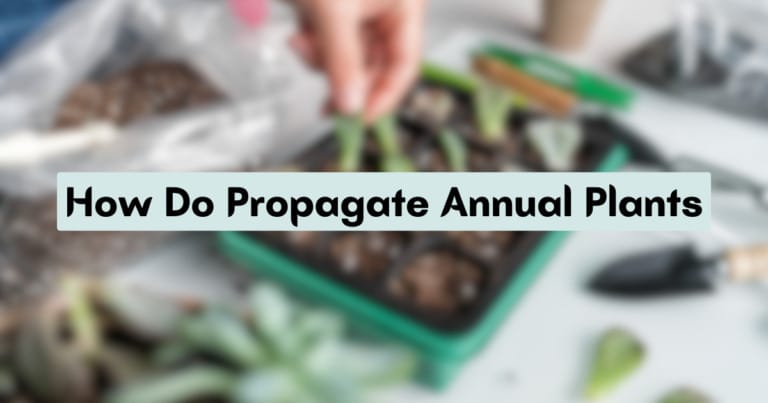
In the world of plants, there’s one particular question that might pique your curiosity: “What’s the tallest annual plant?” Well, buckle up, my fellow nature enthusiasts, because we’re about to embark on a leafy journey to discover the towering champions of the plant kingdom!
Imagine a plant reaching for the sky like a determined climber, sprouting higher and higher with each passing day. Picture yourself standing in awe beneath its lofty branches, amazed by its impressive stature. It’s a fascinating sight, isn’t it? So, let’s dive in and uncover the contenders for the prestigious title of the tallest annual plant!
From the proud sunflowers stretching their majestic heads towards the sun to the breathtaking cornstalks that seem to touch the clouds, the plant world is full of stunning examples of nature’s architectural wonders. So, let’s explore the incredible world of plants and find out which one deserves the crown of the tallest annual plant!
What’s the Tallest Annual Plant?
Did you know that the sunflower is considered the tallest annual plant? Native to North America, sunflowers can grow up to 10 feet or more in height in just one growing season. With their vibrant yellow petals and iconic brown centers, sunflowers are not only impressive in size but also add a cheerful touch to gardens and landscapes.
Learn how to grow your own towering sunflowers and enjoy their beauty all summer long!
The Majestic Sunflower: Reaching for the Sky
When it comes to height, few plants can rival the majestic sunflower. With its vibrant yellow petals and towering presence, the sunflower is not only a favorite among gardeners but also a symbol of summertime. The average height of a sunflower can range from 5 to 12 feet, but there have been records of sunflowers reaching over 20 feet in height. These tall annual plants are known for their fast growth and can grow up to several inches per day under optimal conditions.
Aside from their impressive stature, sunflowers also serve a variety of practical purposes. Their large, disc-shaped heads produce copious amounts of seeds, which are a popular snack for birds and a nutritious source of oil and food for humans.
Sunflowers are also commonly used in landscaping to add height and visual interest to gardens. Additionally, their extensive root system helps improve soil quality by absorbing excess water and filtering pollutants.
Cultivating sunflowers is relatively easy, and they are a popular choice among both novice and experienced gardeners. They thrive in full sunlight and require regular watering, particularly during dry spells.
Planting sunflower seeds in well-drained soil and providing support, such as stakes or a trellis, can help prevent the tall stalks from toppling over in strong winds. With proper care and attention, you can enjoy the beauty and magnificence of sunflowers in your own backyard.
Reaching New Heights: The Sturdy Cornstalk
Another contender for the title of the tallest annual plant is the sturdy cornstalk. Known for its versatility and nutritional value, corn has been cultivated by humans for thousands of years. Cornstalks can reach impressive heights, often surpassing 10 feet tall and sometimes even reaching up to 20 feet.
These tall plants are a common sight in agricultural fields around the world, where they are grown for their kernels, which are rich in vitamins and minerals.
In addition to being a valuable food source, cornstalks also offer numerous benefits to the environment. The extensive root system of corn helps prevent soil erosion by anchoring the soil and reducing runoff. Furthermore, cornstalks act as natural windbreaks, providing shelter for other crops and protecting them from strong winds. The dense foliage of corn also helps suppress weed growth, reducing the need for herbicides.
Growing corn requires a bit more effort than sunflowers. Unlike sunflowers, corn prefers to be planted in a group to facilitate pollination, as the tassels at the top of the plant contain the pollen necessary for fertilization.
Corn also requires a longer growing season and thrives in warm temperatures. Providing ample sunlight, regular watering, and nutrient-rich soil can help ensure the success of your corn crop. With proper care, you can enjoy the sight of tall and bountiful cornstalks swaying in the breeze.
The Towering Delphinium: A Garden Marvel
While sunflowers and cornstalks may dominate the fields and farmlands, there are also impressive annual plants found in garden settings. One such plant is the towering delphinium, known for its vibrant, towering flower spikes. Delphiniums can reach heights of up to 6 feet, making them a striking addition to any flower bed or garden border.
Delphiniums are cherished for their colorful flowers and are available in various shades ranging from deep blues to vibrant purples, pinks, and whites. Their tall, spiky blooms provide vertical interest in the garden and attract pollinators such as butterflies and bees. These majestic annuals prefer full sunlight and well-drained soil and require regular watering to thrive.
With their impressive height and vibrant blooms, delphiniums bring a touch of elegance and drama to any garden. Their tall stature makes them ideal for creating height variations in flower arrangements and adding visual interest to landscapes. However, it is important to note that delphiniums can be toxic if ingested, so caution should be exercised if you have pets or young children.
Choosing the Right Annual Plant for Your Garden
Now that you know more about some of the tallest annual plants, you can select the one that best suits your garden and personal preferences. Whether you opt for the sunflower’s sunny disposition, the cornstalk’s practicality, or the delphinium’s elegance, these tall annual plants will make a statement in your outdoor space.
Remember to consider factors such as sunlight requirements, watering needs, and soil conditions when choosing your plants. With proper care and attention, you can enjoy the beauty and grandeur of these towering wonders right in your backyard.
Frequently Asked Questions
Are you curious about the tallest annual plant? Look no further! We’ve got the answers to your burning questions right here. Read on to discover fascinating facts about the world’s tallest annuals.
1. How tall can annual plants grow?
Annual plants have a diverse range in heights, varying from just a few inches to towering heights. Some annuals, such as sunflowers, can reach incredible heights of up to 12 feet or even more! These majestic plants captivate us with their imposing presence and vibrant colors, making them a favorite among gardeners and nature enthusiasts.
It’s important to note that the height of an annual plant depends on several factors, including genetics, growing conditions, and care. Factors such as sunlight, water, and nutrients play a significant role in determining how tall a specific plant will grow.
2. What are some examples of tall annual plants?
When it comes to tall annual plants, sunflowers undoubtedly steal the show. With their iconic large flower heads and towering stems, sunflowers are known for their impressive height. Another example of a tall annual plant is the Castor Bean plant, which can grow up to 15 feet tall! These plants are not only visually striking but also attract beneficial insects and birds to your garden.
Other tall annuals include the Mammoth Russian Sunflower, Hollyhocks, and Sweet Peas. Each of these plants boasts a unique beauty that enhances any garden or landscape where they grow.
3. Can annual plants be grown in containers?
Absolutely! While some annual plants may require more space due to their height, many varieties can thrive and look stunning in containers. When choosing annuals for containers, it’s best to opt for dwarf or compact varieties to ensure they don’t outgrow the container’s size.
Consider choosing plants like Petunias, Marigolds, or Geraniums, as they are well-suited for container gardening. Be sure to select a container with proper drainage and provide regular water and fertilization to help your annuals flourish.
4. Do annual plants need replanting every year?
Indeed, annual plants need to be replanted every year as they complete their entire life cycle in a single growing season. Unlike perennial plants that can survive for multiple years, annuals complete their growth cycle from seed germination to flowering and seed production within one season.
Although the process of replanting may seem like a hurdle, it also gives you the opportunity to experiment with different plant varieties, colors, and layouts in your garden every year, making it an exciting aspect of gardening for many enthusiasts.
5. How can I support tall annual plants to prevent them from toppling over?
Tall annual plants may require support to prevent them from toppling over, especially when faced with strong winds or heavy rain. To provide support, you can utilize stakes, cages, or trellises. Staking involves driving a stake into the ground near the plant and securing it with soft ties or twine.
Cages or trellises are ideal for plants with climbing or vining habits. These structures allow the plant to grow vertically, providing natural support as they reach for the sky. As the plant matures, regular pruning can also help maintain a strong and stable framework.
So, what’s the tallest annual plant? It turns out that it’s the cornstalk! This incredible plant can grow up to 10 or even 20 feet tall in just one growing season.
But corn isn’t the only tall annual plant out there. Sunflowers also reach great heights, often standing at 6 to 12 feet tall. Whether it’s corn or sunflowers, these plants show us just how amazing nature can be by reaching for the sky in such a short amount of time.



